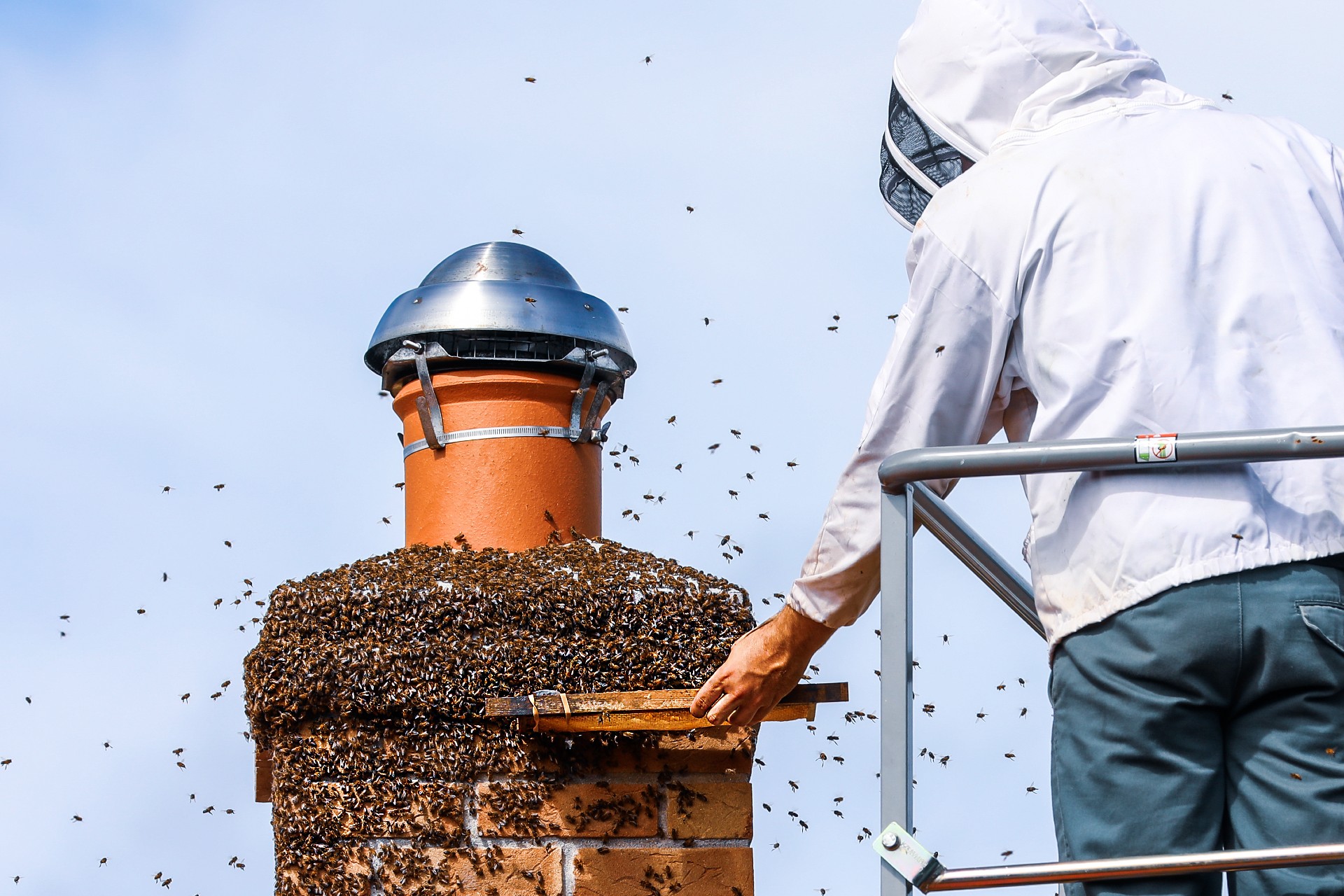Beginning beekeepers face many challenges, especially when venturing without guidance from an experienced beekeeper or mentor. Unfortunately, these challenges that new beekeepers fumble through can also be hard on the bees. The more knowledge people have, the more beneficial it is to the bees. In the case of beekeeping, knowledge is indeed power. The two main methods for bee removal from a home or structure are the cutout and trap-out methods, and neither should be done by someone without experience.
Bee removal companies, like D-Tek, provide removal services due to their decades of experience in beekeeping. These experts have the knowledge, experience, and equipment necessary to remove bees successfully. Beekeepers often continue their agriculture, horticulture, and pest control education to help improve the removal process.
Bee Removal is Not a Quick Process
One challenge with removing bees is that clients who face bees that need to be removed want it now because they think it is much simpler than it is. Humane live bee removal is not just killing the bees and being done with it. The process can be extensive and must be done with care so that the bees are removed along with all remnants of honeycomb so they do not return and attract other pests.
Educating those who face bees in their homes is important because it can be prevented, and bees don’t just turn up there coincidentally. Something about that space makes a good home for them, and without understanding why, they may come back for another round.
Bees need a few things to survive, so if they end up in your home, they have at least two. Bees look for food, water, and somewhere to breed when choosing a new location for their home. If these are present inside the structure of your home, you may have a pest problem. However, there are ways to bee-proof a home, and beekeepers and bee removal companies are happy to share the nuances of this preventative approach.
Apiphobia is the fear of bees and bee stings, which is very common. This is often the reason why bees must be removed urgently, and people are wise to take caution and hire an expert. Understanding the life cycles of bees and the process of swarming often puts people at ease because bees are not out to get people. Gone are the days of spraying pesticides on unwanted bees. Although a spray may kill a single bee, using pesticides on an established colony is illegal in many areas. Additionally, using this archaic method leaves the honeycomb and dead bees in the home and will attract rats and roaches and begin to cause a terrible odor.
Pest Control and Beekeepers Unite
Pest control companies are partnering with beekeepers to find humane ways to remove bees and repair any damage necessary to perform thorough bee removal. The most common type of bee removal is the cutout method, where the structure's wall is opened up to expose the entire beehive. The combs are cut out carefully and placed into frames to transport. This method is the quickest, although large established hives can take a day or two to remove completely and ensure repair work is done at the highest quality.
In some cases, bee vacuums are used to assist in collecting the colony and rounding up the stragglers.
The second method of removing live bees is the trap-out method. This method is considered less invasive to the home’s structure, but without being able to see the extent of the hive, it is difficult to guarantee that all the bees are removed. This method also takes significantly longer (a minimum of a few weeks) and is not often used by experienced bee removal companies.

Get help with your beehive or bee swarm removal! Call Today 760-224-3040 Or 951-265-8292!
Why New Beekeepers Should Not Remove Bees
There are a couple of reasons it is not recommended for new beekeepers to try to do removals.
- Bee removals cost money, and repair work is often necessary.
- Bees that are removed will require nursing back to health, which requires knowledge and experience.
Beekeepers who show up to a home and identify a beehive within the walls, roof, or other areas hidden from view have the best intentions. However, it is a mistake to think that any beekeeper can safely and correctly remove a beehive without guidance from someone with experience.
Without proper planning, a beehive removal can go wrong and end up worse than before meddling. Experienced bee removal companies may use thermal imaging to locate a hive, but they may also make small holes to identify the scope and scale of the hive that needs to be removed.
As a homeowner, remember that beehives may weigh hundreds of pounds and have up to 50,000 bees, so the removal process is not for the faint of heart or inexperienced. If you have any concerns about a beehive in your home or suspect bee activity inside your wall, attic, or other insulated area, please do not attempt to remove the bees or kill them without the experience and guidance of a local expert. D-Tek Live Bee Removal primarily does humane live bee removals and has decades of experience as a local beekeeper. D-Tek provides the most comprehensive bee removal process because its bee technicians are trained in structure repair and guarantee their work.
